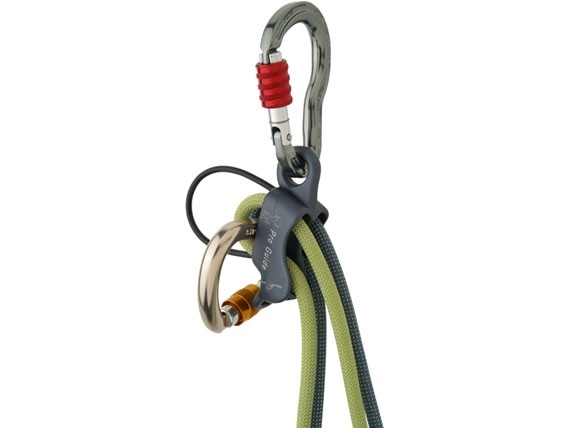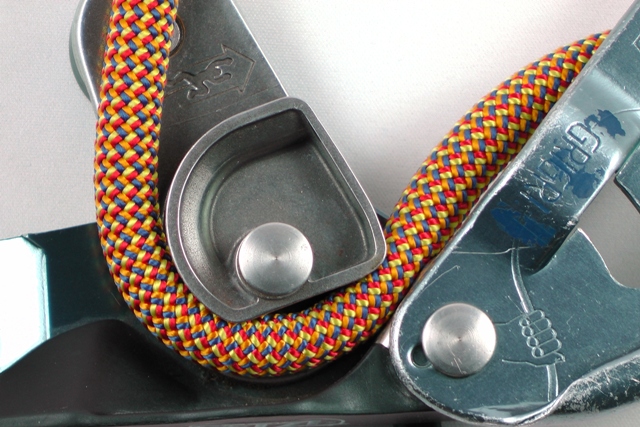A belay device is often the first hardware purchased by the eager new climber. It allows you to hold a falling partner, lower them safely and even abseil if required. Find out about the different kinds of devices.
Manual devices
Manual devices are light and simple, generally with no moving parts. The force with which the belayer grips the free end of the rope is magnified by the device. The hand force is magnified by bending and pinching the rope, and by friction between the rope and the device. The free end of the rope must be securely held at all times when belaying and lowering a climber, or when abseiling.
Some devices only allow the use of a single rope, but many can be used with single, double and twin ropes. Check the manufacturer's information on suitable rope diameters for the device, and test the combination for yourself.
Some devices have 2 modes which provide different amounts of magnification of the hand force, useful if the device needs to be used with varied rope diameters.
A useful feature for mountaineering and when climbing in a team of three is to have what is sometimes called a "Guide mode". Devices of this type can be used to belay one or two seconds when connecting the device directly to the belay.

Manual device in "Guide" mode. photo - Wild Country
Worn devices may develop sharp edges, and may provide less magnification than when new, so check regularly for wear and retire if necessary.
Assisted braking devices
These devices mechanically assist the user during a fall, usually with a rotating cam which pinches the rope . The pinching mechanism relies on tension in the rope to be activated, hence all these devices still rely on the user holding on to the free end of the rope in order to hold a fall.
When lowering a climber, the pinching mechanism must be disabled, usually by pulling a lever. Some devices also include an anti-panic function which prevents uncontrolled lowering. As with all belay devices, correctly matching the device with a suitable diameter rope is paramount.

Rotating cam pinching the rope provides assisted braking.
Assisted braking devices are most suitable for indoor and sport climbing and are designed for use with a single rope.
.jpg)
We want to say a big thanks to every BMC member who continues to support us through the Coronavirus crisis.
From weekly Facebook Lives and GB Climbing home training videos, to our access team working to re-open the crags and fight for your mountain access, we couldn’t do it without you.
Did you know that we've launched a U27 membership offer for just £1.50 / month? And with full membership from £2.50 / month, it's never been easier to join and support our work:
https://www.thebmc.co.uk/join-the-bmc-for-1-month-U27-membership
« Back
This article has been read
3120
times
TAGS
Click on the tags to explore more